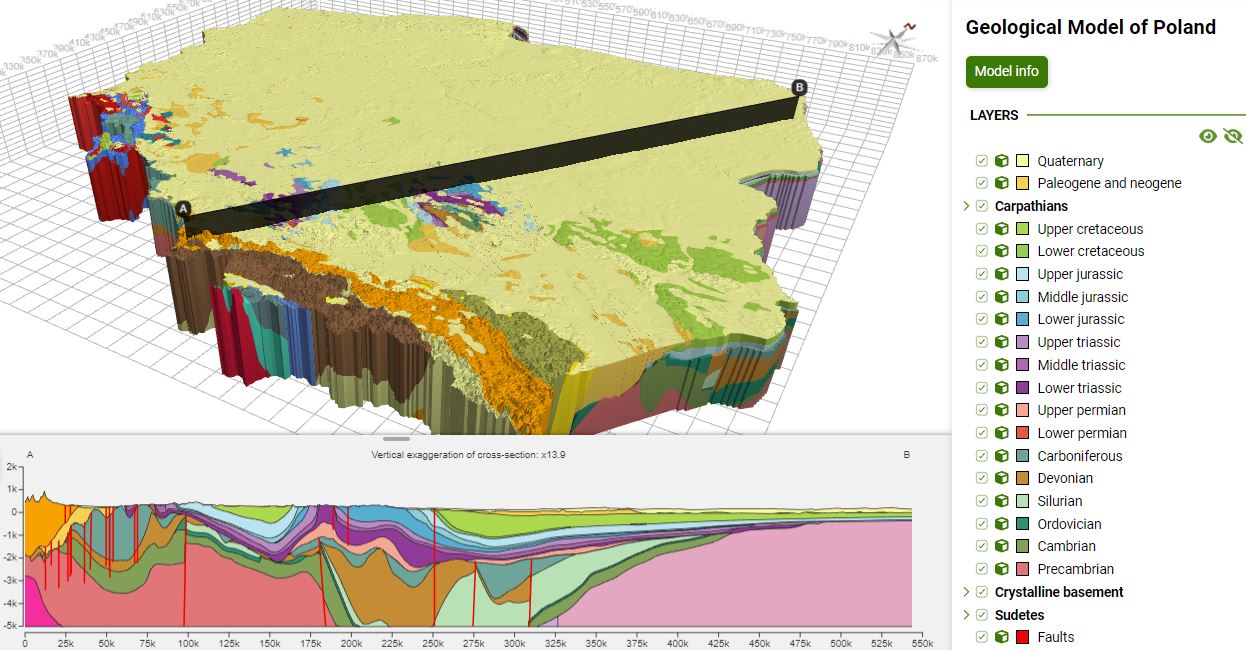„The country-wide Framework geological model of Poland as the basis of modern geological cartography” was created nearly 20 years after the first spatial model of Poland's geological structure within the range of -500 to -6000 m above sea level (Piotrowska et al. 2005). This model was the world's first 3D geological model covering the entire country. After two decades of development in information technology tools and the increase in digital data resources, its update and reconstruction to a significantly more advanced version, in terms of technical aspects and compliance with current geological knowledge, became necessary. The new model represents a new quality in terms of both detail and scope, as well as the modeling range: faults, salt diapirs, tectonics of mountainous areas, and above all, a parametric grid, allowing for the use of the model in a much broader range – for example, for conducting further calculations. In geological 3D cartography in Poland, this is a very significant step forward.
The presented 3D model of Poland's geological structure within the depth range from 5 km below sea level to the surface, was created in the years 2020–2023. The model illustrates the geological structure of Poland, consisting of basic chronostratigraphic units building the substrate of the Polish lowlands and basic structural elements in mountainous areas. The model contains faults reflecting the most important tectonic events in the evolution of this part of the crust, including the Teisseyre-Tornquist Zone faults - one of the most important tectonic zones in Europe, separating the East European Craton (the crust of the pre-Cambrian Baltic continent, building the NE part of Poland) from the basement of the West European Platform, composed of successively docking fragments of other lithospheric plates in successive orogenies. The model also includes detailed (to the extent possible at this scale) elaborations of salt diapirs, mainly composed of Upper Permian rock salts, constituting a very characteristic feature in the Permian-Mesozoic structure throughout the entire Permian Basin, stretching from Poland through Germany and Denmark to the North Sea. In the Carpathians, representing the youngest (only a few million years old) acquisition of consolidated crust in Poland, the main tectonic plates are presented, thrust during the Miocene onto the foredeep basin sediments formed in front of them. In the basement in the Sudetes region, the Sudetes and the fore-Sudetic block, as well as the largest intrusions.
To present the 3D model in a web browser, it had to be generalized. Due to the necessary simplifications, discrepancies with the recognized geological structure may have arisen. Please report such cases by writing to geo3d@pgi.gov.pl
Browse the Framework model of Poland in Geo3D
Proposed citation of the model:
Małolepszy Z., Meissner, U., Szynkaruk E., (red.). 2023. Framework geological model of Poland. PGI-NRI, Warsaw, Poland
